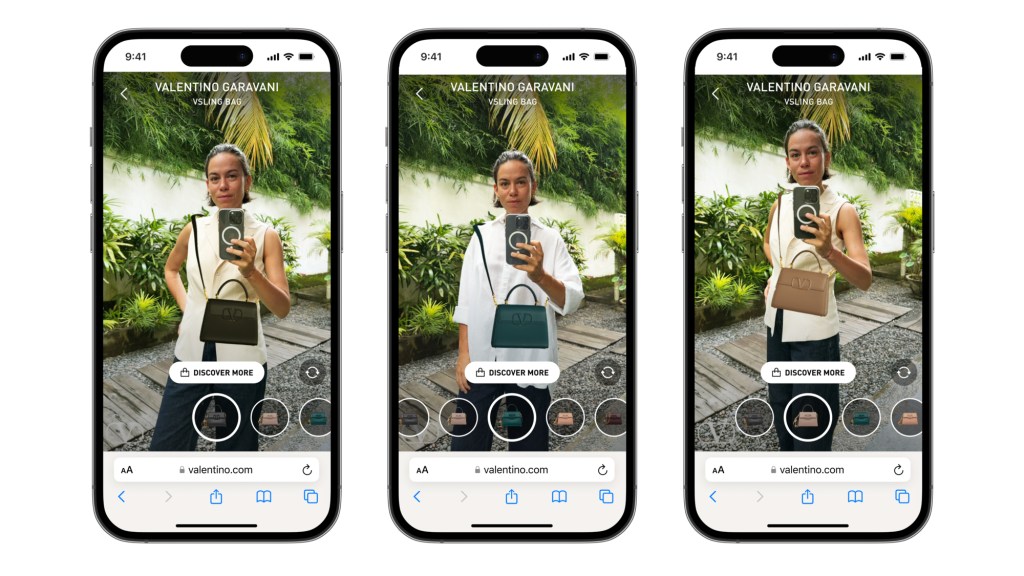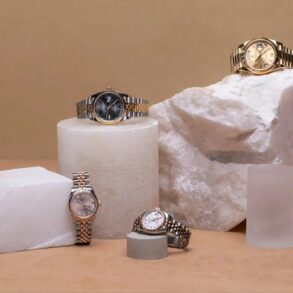
With Valentino’s new virtual try-on, revealed Monday, shoppers can wear a digital version of the Garavani VSling bag and check it out with different looks before buying.
The feature, available on the maison’s website, was built by Wanna, a subsidiary of Farfetch that builds augmented reality and virtual try-on experiences for the luxury industry.
The physical product itself was designed for flexibility, allowing customers to carry it by the top handle or as a crossbody bag using the long strap, so it can go from day- to night-time use. Likewise, shoppers can try it on virtually with different looks or settings that offer five different color options.
This flexibility also extends to the way the try-on works. While most virtual try-on features rely on the selfie camera, Wanna’s tech can tie into both front and rear shooters. This means people have the option to capture these looks with their most powerful and sophisticated camera, and then use the shareable links to publicize the images, whether in newsletters, social media or elsewhere.
According to Wanna, it created the tool in partnership with Valentino, and the collaboration marks the first time a luxury brand has integrated the bag try-on tech into its own site.
Not that Valentino is entirely new to augmented reality, having previously launched similar experiences for footwear and clothing. Apparently, those initiatives were successful enough to encourage the brand to expand into new categories and weigh more uses of immersive technology.
The latest effort coincides with the digital campaign for the Valentino Garavani VSling bag, starring actress Samara Weaving.
Zina Grossman, Wanna’s chief growth officer, believes virtual try-on integrations are growing within e-commerce, particularly for products like bags — which makes sense. Handbags, shoes and jewelry are less complicated to render than apparel with its flowy fabrics, physics and sizing complexities.
“The novel web-based VTO [virtual try-on] offers a phygital experience that enriches and personalizes the user journey,” Grossman said in a statement. “This innovation aids consumers in making informed decisions and fosters an emotional connection with the product, making it a pivotal enhancement for luxury e-commerce.”
The other noteworthy aspect of its technical work is its online ubiquity. Instead of coding the try-on into a specific app or platform, the feature lives in Valentino’s website — where any mobile device can easily access it and any updates can go live immediately, without waiting for app store approvals.
The tech company hopes this proposition will hold broad appeal beyond Valentino, as it offers Wanna VTO for Bags as a software developer tool for other brands to use.
In January, Wanna’s parent, Farfetch, officially became part of of South Korea’s Coupang, which scooped up the troubled luxury platform with $500 million in rescue financing.
This post was originally published on this site be sure to check out more of their content.




